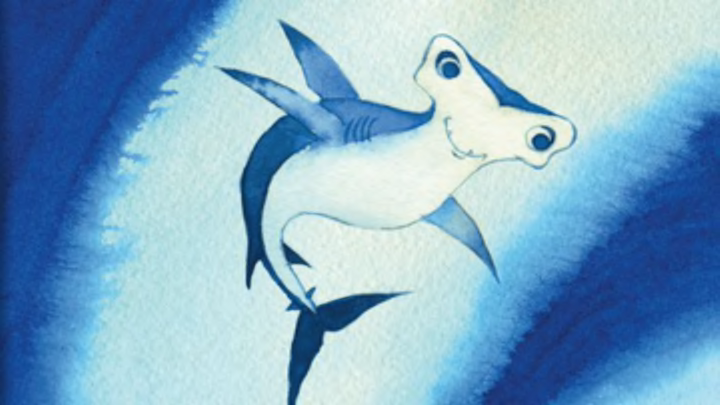Who’s flat, friendly, and wants your help protecting the oceans? Shark Stanley, of course.* The cut-out cartoon hammerhead is saving his fellow sharks, one smile at a time.
Sharks get a bad rap, one they really don’t deserve. Movies like Jaws and Sharknado turn these beautiful fish into monsters, but the reality is that we’re far more dangerous to them than they ever were to us. You’re far more likely to be flattened under a vending machine than killed by a shark. People, on the other hand, are killing millions of sharks every year. And this doesn’t just hurt the sharks. Research has shown that ocean ecosystems, including coral reefs, collapse without apex predators.
Enter the Shark Defenders, a team of Yale University students and conservationists from the Pew Charitable Trust. In advance of the 2013 Convention on International Trade in Endangered Species of Flora and Fauna (CITES), the team launched a campaign to convince participating politicians to advocate for endangered sharks and rays.
“There was no shortage of shark petitions on the Internet,” the Shark Defenders wrote on their website. They knew they’d have to do something special in order to make a difference. That something was Shark Stanley.
Inspired in part by the Flat Stanley Project, in which children send hand-drawn Stanley cutouts to their heroes, the Shark Defenders created a free printable cutout of a goofy, grinning hammerhead shark. Their hope was to get children from the countries involved in CITES to take their pictures with Shark Stanley, then share those pictures with the CITES delegates. Each photograph would represent a request to protect scalloped sharks, great sharks, and smooth hammerhead sharks like Stanley as endangered species.
And they did. Shark Stanley was an instant hit. Printable cutouts of Stanley and his friends became available in December of 2012, and a free downloadable picture book went up in January. By the time of the conference in February 2013, the Shark Defenders had received about 10,000 pictures from children in 135 of the 177 CITES countries.“We wanted to do more than just gather signatures,” the Shark Defenders said. “We wanted to actively engage young people and create a dedicated army of activists.”
The Shark Defenders compiled all the photographs into a massive collage, which they brought to the CITES meeting in Thailand in March 2013. They shared the pictures, their story, and the sharks’ plight with every delegate they met, including those from countries where shark finning is common.
Their efforts, and the children's advocacy, paid off. Five shark species and all manta rays were added to the CITES appendix of protected species at the meeting in Thailand.
Getting those species listed was a triumph, but the sharks still need help. The Shark Defenders' next task is convincing the governments and citizens of island nations to create shark sanctuaries. To support their case, they've updated the picture book to include familiar island species like whale sharks. Angelo Villagomez of the Pew Charitable Trust was one of Shark Stanley's creators and is hopeful about the new project's potential. The book is an educational tool, Villagomez told mental_floss, and a way of spreading awareness.
Shark Stanley's fan club continues to grow. Conservation superstars like oceanographer and explorer Sylvia Earle (known as "Her Deepness") and naturalist author Carl Safina have signed on as ambassadors, and classrooms all over the world share photo after photo.
Want to get in on this? Shark Stanley and his friends would be glad to meet you. Visit Shark Defenders and print out your own Shark Stanley, Manta Reina, or Pierre le Porbeagle. Cut out your shark, take a picture, and share it on Twitter or Facebook with #SharkStanley.
* "Spongebob Squarepants" would also have been an acceptable answer.
All images are courtesy of Shark Defenders.
